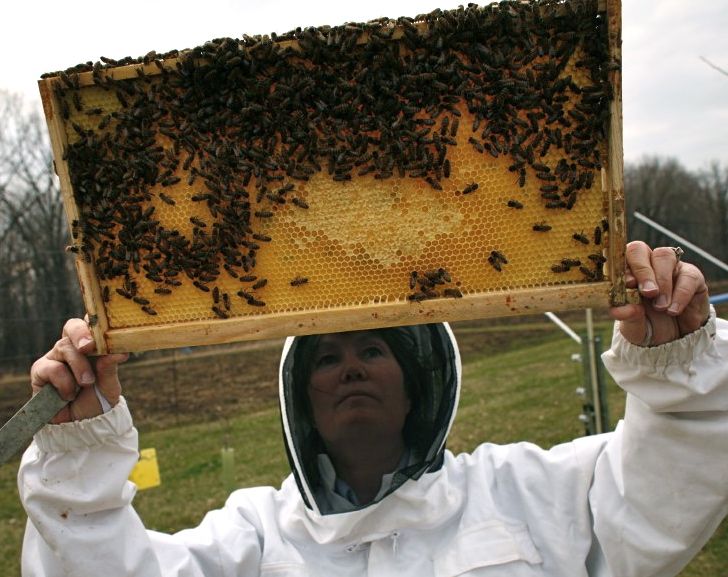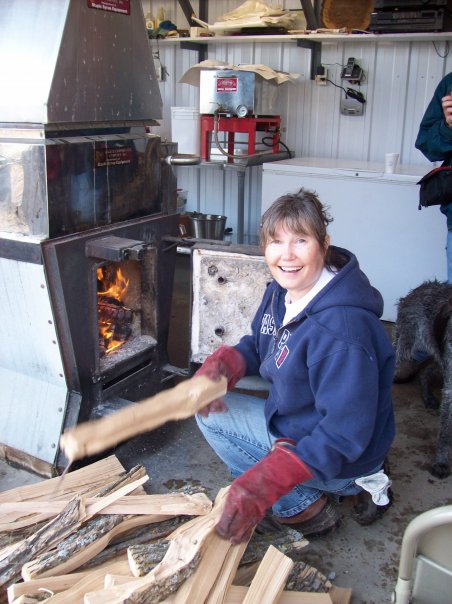The USDA just released the survey results of winter honeybee colony losses, and the news is bad. Nationwide, the losses of managed honeybee colonies totaled almost 34 percent from October 2009 to April 2010 – an increase from the 29 percent loss reported in 2008-2009. The complete results of this survey conducted by the Apiary Inspectors of America (AIA) and the Agricultural Research Service (ARS) is yet to be published, but the abstract is now available.
The numerous threats to honeybees in the United States have been steadily increasing since the mid-1980s when the Varroa Destructor mite was first discovered on domestic soil. Add to that the many other parasites; bacterial, fungal, protozoan, and viral diseases; beekeeping practices using multiple chemicals and medications; loss of habitat; use of pesticides and herbicides; GMOs; and trucking millions of hives each year to the California almond orchards for just a few weeks, then trucking them back to their home state; it’s no wonder that our native pollinators and honeybees are at the breaking point. Sadly, it wasn’t until 2006 when the mysterious disease of Colony Collapse Disorder was decimating the honeybee colonies at apiaries all over the country, that the media finally took note and gave the plight of honeybees some attention.
So why should you care about bees? For starters, one out of every three spoonful of food you put into your mouth is the direct result of bees. We rely on bees to pollinate the food crops we eat and the feed for our livestock. Honeybees also provide us with some wonderful crops harvested directly from the hives including honey, beeswax, pollen and royal jelly. The truth is we need bees – native pollinators and managed honeybee colonies.
While the situation may seem overwhelming, we as individuals collectively can make a big difference. Here are a few things that you can do to help our native pollinators and honeybees get the boost they so desperately need:
 1. Don’t be afraid – Many native bees build their nests on the ground. No doubt you’ve accidentally discovered a nest after moving some debris or object in your yard. Yes, it’s not fun getting stung by a bee, but it’s their only defense when they feel threatened. Before you destroy the nest, first try to let it be. If you give them some space and don’t disturb them, a happy co-existence can be achieved. Better yet, take some time to just watch what they do; you’ll find them to be quite fascinating.
1. Don’t be afraid – Many native bees build their nests on the ground. No doubt you’ve accidentally discovered a nest after moving some debris or object in your yard. Yes, it’s not fun getting stung by a bee, but it’s their only defense when they feel threatened. Before you destroy the nest, first try to let it be. If you give them some space and don’t disturb them, a happy co-existence can be achieved. Better yet, take some time to just watch what they do; you’ll find them to be quite fascinating.
2. Plant native wildflowers – Add diversity to your garden by planting native wildflowers. Not only will they add beauty, but native plants are very low maintenance, they thrive in the climate in which they originated, and most important, they provide more foraging habitat for native bees and honeybees.
3. Avoid using pesticides – When you spray with pesticides, you will be killing the pests you don’t want. But you’ll also be killing the many beneficial insects on which we all depend – including pollinators. If you’re absolutely unwilling to forego spraying, then at minimum, don’t spray during the middle of the day when the pollinators are actively foraging.
4. Know your weeds – What may be an unsightly weed to you is sustenance for bees. For example, dandelions are vitally important to honeybees, providing them with one of the first sources of pollen and nectar in the early spring. Rethink how you manage your yard. Consider first identifying the plant and possibly just leaving it in place until after it blooms. Instead of using a weed-killing spray, remove it by mowing or digging it out. Yes, it’s a little more work, but in the end you will benefit from the efforts in so many ways.
5. Buy local honey – With the continuous rise in threats to bees, the cost of hive management is rising each year, and many sideline beekeepers are calling it quits. Show your support for their efforts and buy honey from the local beekeepers. An even greater benefit is gained by those people who have seasonal allergies. Consuming honey from local flora helps build up resistance to allergies.
6. Read – Spend a little time learning about the subject. You can start by just Googling any subject related to honeybees and pollinators, or you can subscribe to a beekeeping publication such as Bee Culture or American Bee Journal.
7. Join a beekeeping club – Network with beekeepers or others who are interested in bees by joining a local beekeeping club. A great place to start is to attend the Minnesota Hobby Beekeepers Association which meets once per month at the University of Minnesota St. Paul campus. They regularly have very interesting guest speakers that are sure to intrigue.
8. Take up beekeeping – It’s a very rewarding hobby, and it’s not just for people living in the country. There are many hobby beekeepers all over the Twin Cities metro area. You will need to check the local ordinances of the cities in which you reside. You’ll be surprised to learn just how many cities do allow it, including the city of Minneapolis.
It’s springtime. The fruit trees are in bloom, gardens are being planted, and pollinators are already busy working hard to assure us all that we will have food on our table. For everything they do for us, the least we can do for them is help them to survive.
(Photo credits: Mitch Kezar, Kezar Photography)
Debbie Morrison grew up in Minneapolis and spent more than 20 years as a marketing strategist for ad agencies in the Twin Cities. Now, she and her husband own and operate Sapsucker Farms, where their certified organic crops include maple syrup, honey, apples, plums and vegetables. Debbie's last post for Simple, Good and Tasty was Making Maple Syrup Brings Out the Kid in All of Us.




